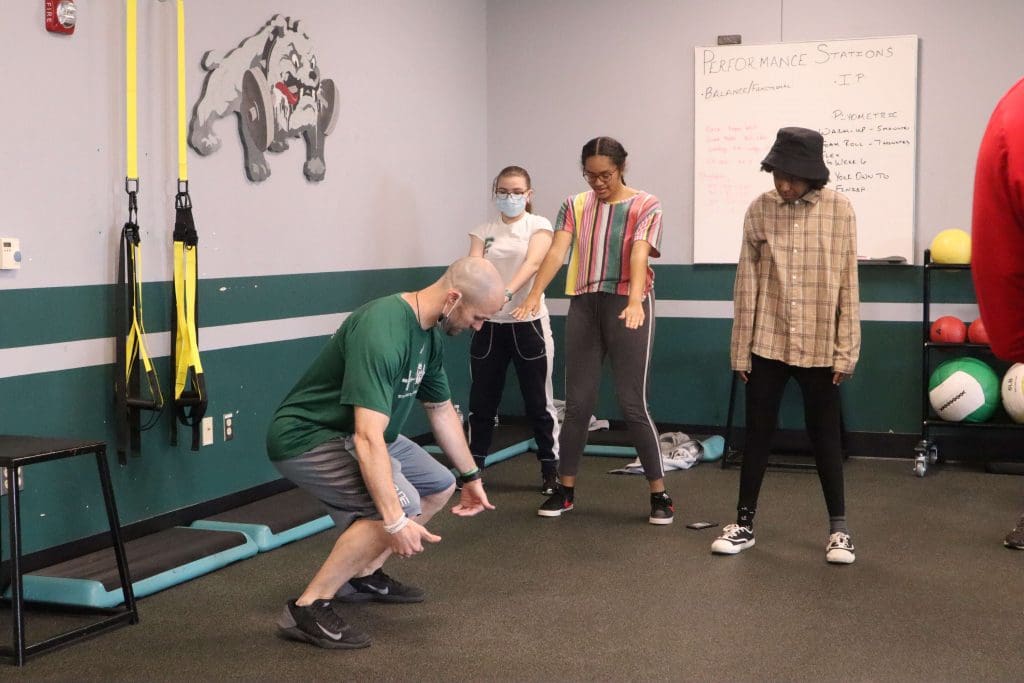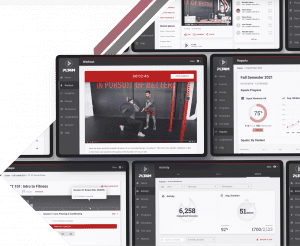Modeling is the process of demonstrating and exhibiting a behavior or skill to students. It is a powerful teaching tool that allows physical education teachers to show students how to do something correctly and with proper form. This article will discuss modeling in physical education, provide examples, and discuss how it can be used to improve student learning. As an added bonus, we break down technology modeling in physical education for schools looking to add a digital component to PE.
What is Modeling In Education?
Modeling in education focuses on demonstrating concepts, processes, skills, or behaviors to help students learn. Teachers, students, digital resources, and other lesson materials can all help facilitate modeling in education.
For example, model-based instruction is often utilized in math class when learning to solve different types of equations. First, a teacher demonstrates the steps to solve a particular kind of equation. Next, the students take these modeled steps and practice solving different equations themselves.
And while traditional approaches to a models-based practice focus on teacher modeling, students can also lead the class or small groups in modeling. For example, if a student has grasped a classroom behavior, the teacher can highlight this and have the student model this behavior to the rest of the class. Any model-based instruction a student leads can be a powerful tool for student motivation and engagement.
Finally, different digital resources and lesson materials can assist in modeling in education. For example, a teacher could display an instructional video of a physical activity. This video can add additional layers of modeling and instruction to help deepen the learning process for students.
The options for modeling in education are endless! And different types of modeling can be utilized depending on the subject matter and grade level. So what does modeling in physical education look like?
Modeling in Physical Education
Physical education provides students with a planned, sequential, K-12 standards-based program of curricula and instruction designed to develop motor skills, knowledge and behaviors for active living, physical fitness, sportsmanship, self-efficacy and emotional intelligence. (Shape America)
Because physical activity and skill development are core pillars of physical education, the options for modeling in physical education are endless.
A few high level examples of modeling in physical education include:
A teacher demonstrates a movement/exercise to the class highlighting key points of performance and tips and tricks for success.
Physical education programs incorporate fitness videos like yoga, dance, or boxing, where students can follow along to the instructor modeling and guiding students through a follow-along workout.
- Short instructional videos demonstrate and model proper form and technique before a student goes and perform the exercise independently.
- Students lead and plan a warm-up routine to start physical education class and model the different movements to the rest of the course.
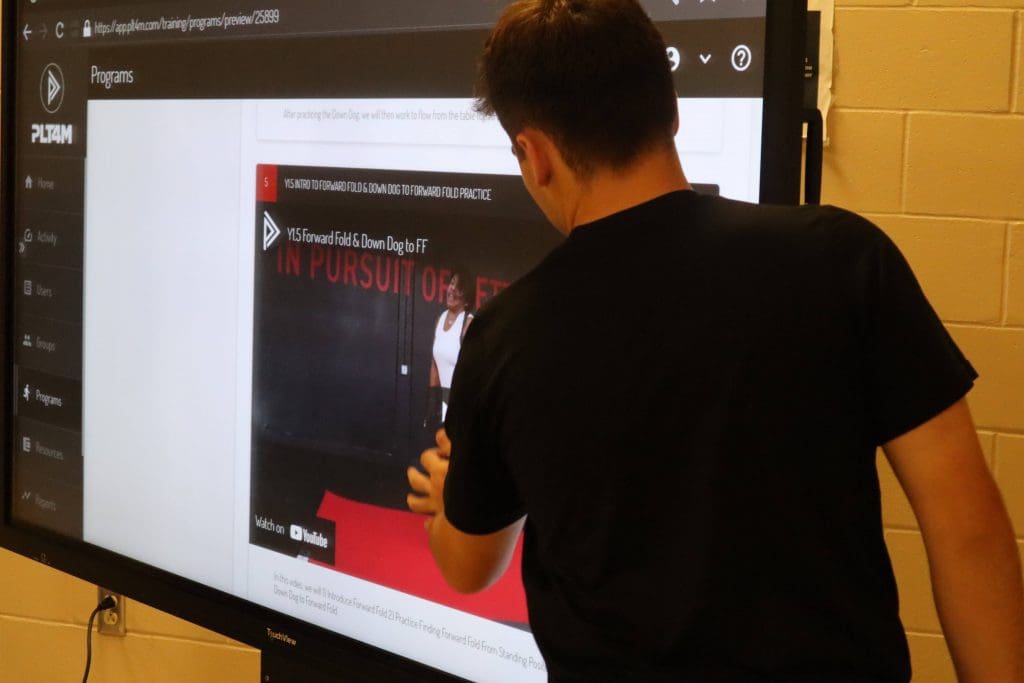
Examples of Modeling In Physical Education
The options for modeling in physical education are endless. At PLT4M, every video and instructional material incorporates some type of model-based instruction. Below we explore two different types of modeling strategies to incorporate in physical education curriculum.
1) Demo and Do Modeling
In these videos, a PLT4M instructor demonstrates what it would be like for PE teachers to introduce different foundational movements for the first time in a physical education class. And there are multiple layers of modeling in physical education happening here.
First, the teacher models good form and technique of the movement.
Next, the teacher encourages students to follow along and mirror the instructor.
Finally, the teacher sends students to go work in small groups to try and practice the movement (See more on cooperative learning). From here, students can practice modeling good form and technique with each other.
Quick author’s note: These videos serve as an excellent physical education professional development tool that physical educators can use when preparing to lead a class. But if you want to take modeling in physical education one step further, you could even display these videos in class for students to watch and follow along!
Ready to Learn More?
Schedule a free 10 minute consultation to see how PLT4M can help save you time and empower student learning!
2) Full Lesson Modeling
In our first set of examples, the teaching and modeling were quick components before students worked independently. But physical education programs also want to incorporate full follow-along workouts like dance, yoga, bootcamp, and more. In these examples, modeling in physical education happens throughout the entire class. Different types of fitness classes require a teacher or instructor guiding individuals step by step and modeling the movements and physical activity.
But physical education teachers might not feel confident leading these types of classes from start to finish. Here is where using digital resources and follow-along videos can be a powerful tool for modeling in physical education. Here is how displaying a PLT4M video can incorporate different elements of modeling in physical education:
PLT4M instructor guides and models movements in the workout
Physical education teachers can become facilitators and move throughout the classroom, giving more one-on-one instruction and enhancing student learning.
Here are three different examples from PLT4M yoga, dance, and bootcamp to see what modeling in physical education can look like with instructional videos.
Bonus: Technology Modeling in Physical Education
As more schools adopt a fitness education model via PLT4M, they also have to consider how to incorporate technology in physical education. How can technology add educational value without becoming a distraction in the classroom?
Here is where technology modeling in physical education proves to be a powerful teaching strategy. For example at Canton, the PE teachers take a 3 step approach to technology modeling in physical education.
In the first few lessons, the teacher leads with PLT4M on a monitor or projector. Students don’t use technology yet.
After a few lessons, students follow along on individual devices while teacher leads and models on a projector or device.
Finally, students work independently or in groups on devices without teacher leading lesson on projector.
In just a few weeks of the semester, students learn the educational process of using technology appropriately and effectively. After setting a foundation and clear expectations, technology in physical education becomes a tool for lessons and workouts, rather than the dreaded distraction people fear.
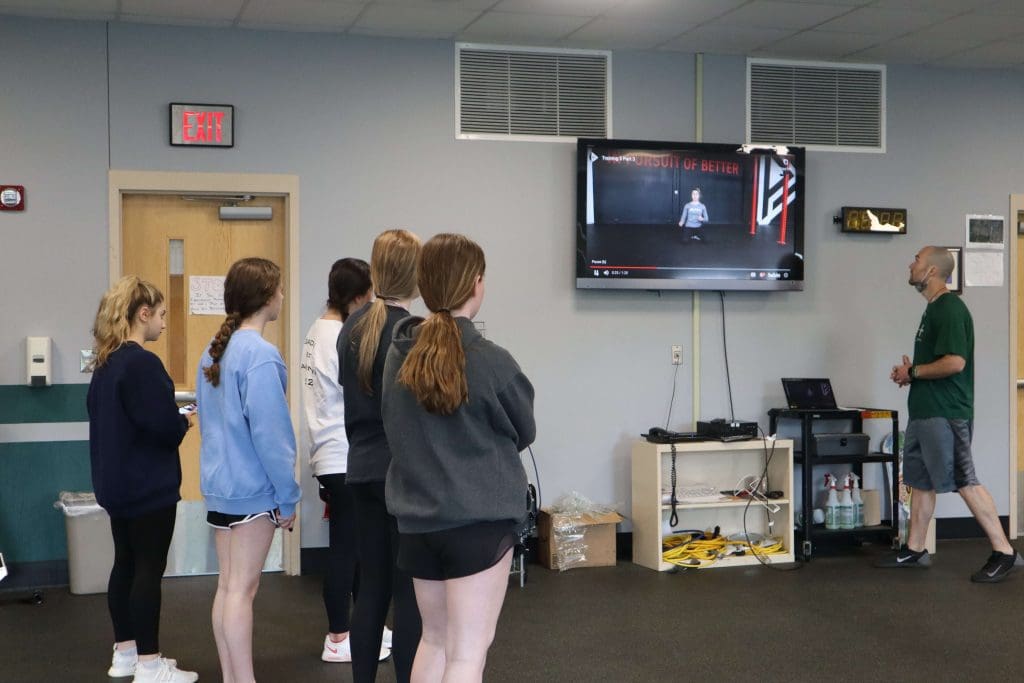
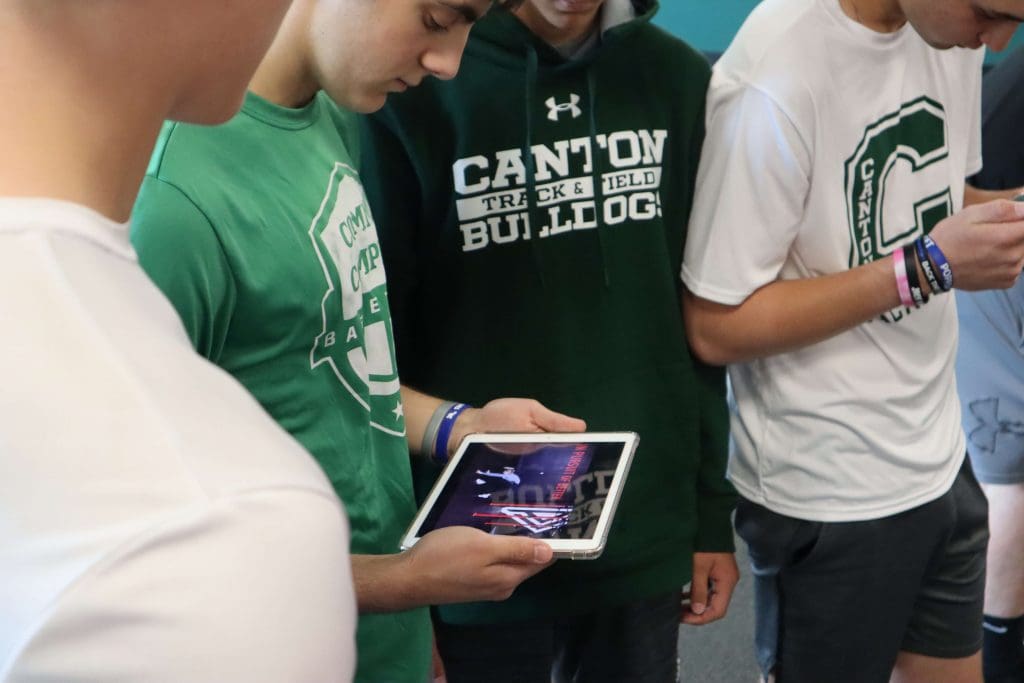
Key Takeaways on Modeling In Physical Education
Modeling in education is a popular teaching strategy that can enhance physical education programs. Moreover, schools looking to adopt a fitness education model for physical education curriculum can greatly benefit from different elements of modeling.
Key takeaways include:
Modeling is not just for teachers! Students can also be active participants in modeling.
Technology and digital resources can add additional layers to modeling in physical education.
Beyond skills, physical education teachers can use modeling to promote behaviors, processes, and more.
Ready to Learn More?
Schedule a free 10 minute consultation to see how PLT4M can help save you time and empower student learning!
FAQ
Does PLT4M have professional development?
Yes PLT4M has a full slate of physical education professional development. As schools look to improve the overall health and wellness through a fitness education model, we are here to support that through high quality PD. Throughout our courses, we review different teaching strategy tips and best practices for your school context.
Does PLT4M have units for a sport education model?
Not yet! While many schools are shifting to a fitness education model, we know that schools also want different sport education units. Our goal is to create different units and resources for things like pickleball, badminton, and more in the coming years.
How many schools use PLT4M?
PLT4M is proud to partner with over 1,000 schools across the united states. Learn more about how your school can use PLT4M through a quick consultation with someone on our team.
